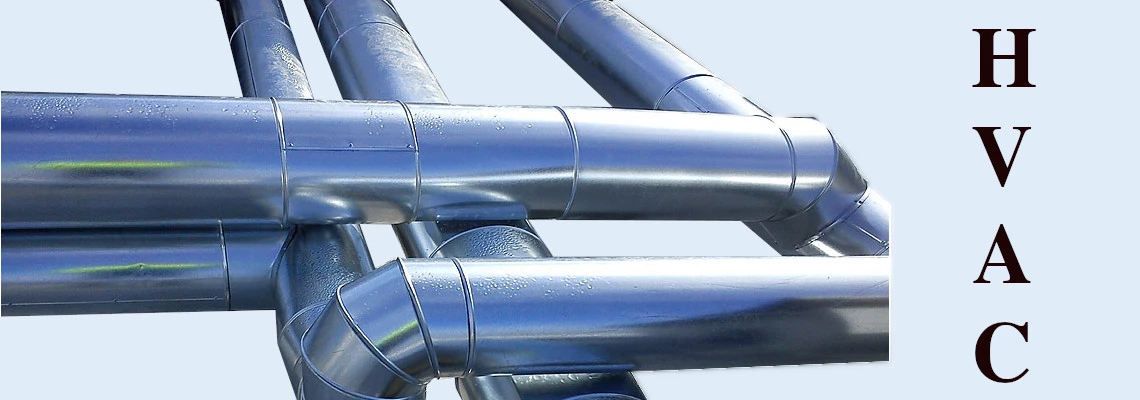
HVAC SIMPLE EXPLANATION*
Picture yourself living in Spain, eagerly awaiting the evening to allow cool air into your home. You might hold off baking a cake until nightfall to cope with the heightened indoor temperature. The only relief comes from enjoying a cold ice cream, taking a plunge into chilled water, or refreshing yourself with a garden hose.
This was life before the widespread use of HVAC systems. Nowadays, HVAC systems are familiar globally, aiding people both at work and at home while also creating job opportunities for installers.
In this short article, we'll delve into this system, explaining in simple terms what it is, when it originated, and how it serves us.
HVAC SYSTEM HISTORY
The history of the HVAC system is quite fascinating, and its inception was not accidental. According to Wikipedia, the system has its roots in ancient times, but it was the industrial advancements and progress in the 19th century that initiated more sophisticated heating, ventilation, and air conditioning solutions.
‘HVAC is based on inventions and discoveries made by Nikolay Lvov, Michael Faraday, Rolla C. Carpenter, Willis Carrier, Edwin Ruud, Reuben Trane, James Joule, William Rankine, Sadi Carnot, Alice Parker and many others
Multiple inventions within this time frame preceded the beginnings of the first comfort air conditioning system, which was designed in 1902 by Alfred Wolff (Cooper, 2003) for the New York Stock Exchange, while Willis Carrier equipped the Sacketts-Wilhems Printing Company with the process AC unit the same year. Coyne College was the first school to offer HVAC training in 1899.The first residential AC was installed by 1914, and by the 1950s there was "widespread adoption of residential AC
The invention of the components of HVAC systems went hand-in-hand with the industrial revolution, and new methods of modernization, higher efficiency, and system control are constantly being introduced by companies and inventors worldwide.’
source:https://en.wikipedia.org/wiki/Heating,_ventilation,_and_air_conditioning
Initially, these systems were primarily used in factories and industrial facilities, but over time, their application expanded to residential and office buildings. They provide comfort, improve the quality of life, and are crucial for maintaining suitable working and storage conditions across various industries.
Today's HVAC systems are efficient and offer a wide range of capabilities, from controlling air temperature and humidity to air filtration, providing comfortable conditions for both people and industrial processes.
WHAT IS HVAC IN SIMPLE TERMS? / SIMPLE EXPLANATION PDF
Google is filled with numerous searches asking, "What does HVAC stand for?" So, what precisely does HVAC mean?
Well, the term HVAC stands for Heating, Ventilation, and Air Conditioning. It serves as a broad description of the overall system. It's essential to note that this term encompasses a wider scope and shouldn't be mistaken for just AC (Air Conditioning).
In the UK, HVAC systems are more prevalent in industrial settings rather than residential areas. This prevalence is closely tied to the lower average temperatures in the UK, which often eliminate the need for installing such systems in most homes.
For a deeper understanding of the HVAC system, it's best to explore detailed specifications included in PDF files. The PDF guide extensively covers essential aspects such as insulation requirements, the materials employed and methods of installation.
WHAT DOES HVAC SYSTEM DO?
HVAC is a mechanical ventilation system primarily designed to ensure proper air circulation while also enabling the cooling or heating of a space to create comfortable conditions for humans, depending on the season. To maintain the desired temperature, it's necessary to ensure adequate insulation, typically requiring a minimum thickness of 25mm.
In general, a well-insulated HVAC system can yield savings of approximately 15%. This stands as another key function it fulfils. Well-insulated ducts efficiently deliver warm air without any loss that might occur during the airflow through ventilation channels. Theoretically, the temperature of the air drawn from the heat source should be the same or very close to that at the output in the room, ensuring effective and efficient operation.
The HVAC system, depending on its configuration, operates in two ways: it can both heat and cool spaces.
HOW DO YOU INSULATE HVAC?
To ensure proper functioning of the HVAC system without heat loss, it must be adequately insulated. The most commonly used insulation material for HVAC ducts includes mineral wool types like Rockwool, Isover, or Knauf.
This type of insulation typically has a density ranging from 45kg/m3 to 60kg/m3. The necessity of using insulation with this density in HVAC ducts is due to the noise levels that can occur inside the ducts. It's recommended to keep the noise level in HVAC ducts below 20dB to prevent disturbance to users, especially during nighttime use.
Generally speaking, the higher the density of the HVAC insulation, the better the soundproofing of the ducts.
Ventilation ducts come in two shapes, rectangular and circular, and these shapes are encountered during their thermal and acoustic insulation.
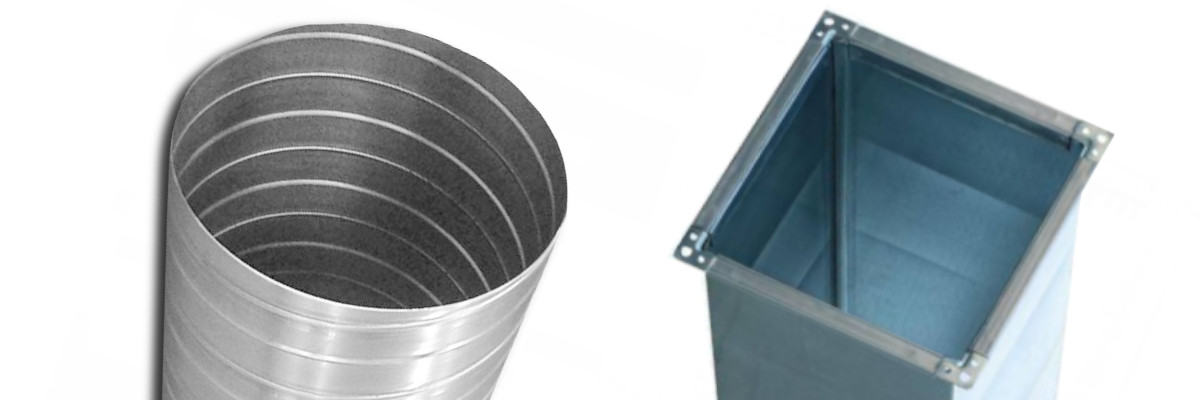
Installing insulation on rectangular ducts is relatively simple and involves placing several self-adhesive pins onto galvanised sheeting and then stretching the insulation across the insulation channel onto these pins.
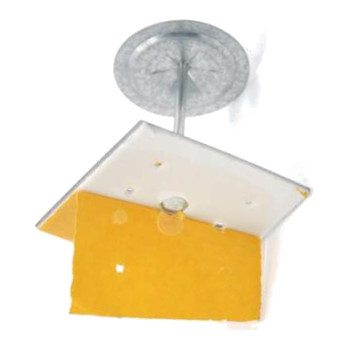
Sealing the insulation joints is crucial using reinforced aluminium tape to prevent detachment during high temperatures in unventilated attic spaces. Some installers additionally secure the insulation from detachment by using additional cable ties around the duct. This is a sensible precaution given the potential for disruptions from birds or insects affecting the insulation.
HVAC INSULATION LENGTH - RECTANGULAR SHAPE
To accurately cut insulation length for HVAC rectangular ducts, the length of their sides should be considered, accounting for the increased length of two sides by the insulation's thickness.
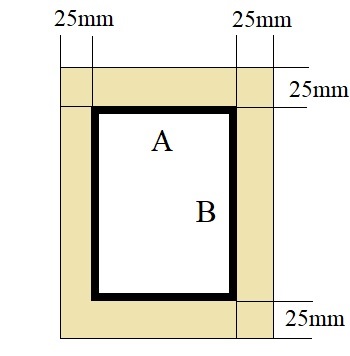 For example, a duct with sides of 200mm (A) x 300mm (B) has a circumference of 2A + 2B, which equals 2x200 + 2x300 = 1000mm. Insulating the same duct with a 25mm insulation thickness increases the length of 4 sides of the rectangle:
For example, a duct with sides of 200mm (A) x 300mm (B) has a circumference of 2A + 2B, which equals 2x200 + 2x300 = 1000mm. Insulating the same duct with a 25mm insulation thickness increases the length of 4 sides of the rectangle:
B + 25mm + 25mm
300 + 25 + 25 = 350mm
350x2=700mm
A + 25mm + 25mm
200 + 25 + 25 = 250mm
250x2=500mm
By using the formula for the circumference of a rectangle, the length of insulation needed to cover the HVAC duct can be calculated.
350 + 350 + 250 + 250 = 1200mm
1200mm is the length at which 25mm insulation should be cut if you want to insulate a ventilation duct with sides of 200mm x 300mm.
Additionally, around 20mm should be added to the length to account for potential loss on the four corners of the duct.
Insulating circular ducts is somewhat more challenging and typically requires two installers. Self-adhesive insulation is used, coated with a layer of adhesive that adheres well to the zinc surface. The fibres in this type of insulation have a transverse cross-section different from traditional insulation, which eliminates the possibility of compression or creasing, ensuring its efficiency.
HVAC INSULATION LENGTH - CIRCULAR SHAPE
To cut insulation to size, you'll need to calculate the circumference of the ventilation duct increased by the thickness of the insulation itself.
The formula for the circumference of a circle is:
L=2πr
So, accounting for the insulation thickness, you must add it to the radius of the circle using the formula:
r + insulation thickness
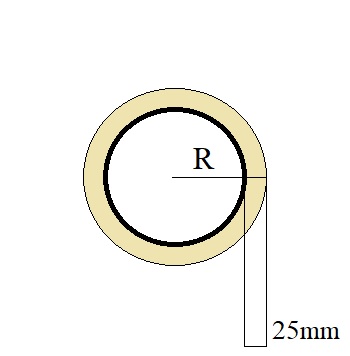 For instance, if a ventilation duct has a diameter of Ø100mm, the radius r would be 50mm. Assuming you're insulating the duct with 25mm thick insulation, the radius will increase by 25mm, making it r = 75mm. Therefore, the calculation for the circumference of the duct would be:
For instance, if a ventilation duct has a diameter of Ø100mm, the radius r would be 50mm. Assuming you're insulating the duct with 25mm thick insulation, the radius will increase by 25mm, making it r = 75mm. Therefore, the calculation for the circumference of the duct would be:
L=2×3.14×0.75=4.71=471mm
A circumference of 471mm is the length of insulation required for the edges of the insulation to meet squarely. In practice, an additional 10mm is often added to the measurement.
This is because the insulation might not always snugly fit against the ventilation duct, which could potentially reduce its actual length and result in gaps at the joints, creating a thermal bridge.
HVAC INSULATION MATERIAL
The HVAC system is quite unique, requiring specific insulation materials that serve various functions.
Effective HVAC insulation needs to prevent moisture, provide thermal regulation, soundproof air-carrying channels, withstand external conditions, repel pests, and facilitate the transfer of heat to its source. Lightweight and easy installation are also crucial factors.
Finding insulation meeting these requirements in the UK market is challenging. While PUR foam is available only in spray form and struggles against sunlight and insects, polystyrene, although good for insulation, lacks soundproofing abilities for ducts.
The best solution appears to be high-density insulation that's both lightweight and easy to install. Rock wool excels in this area, effectively silencing ducts, being non-combustible, and deterring pests. It serves as a reliable shield for HVAC ducts.
Among the top manufacturers for ventilation duct insulation are Rockwool, Knauf, and Isover. Here is the list of following insulation materials used do insulate ducts in UK:
Paroc HVAC Mat Alucoat - Ductwrap Insulation
DOES DUCTWORK NEED TO BE INSULATED?
Ductwork refers to thin-walled materials utilised for transporting both cold and warm air. These materials have slender walls, typically with a thickness ranging between 0.5 to 1mm, which often results in higher thermal conductivity. Therefore, it's always necessary to insulate them to prevent condensation within the ducts.
The ventilation ducts in HVAC systems are predominantly made from metal, and their melting temperature initiates below 1427°C. Serving as air distribution pathways, they can also propagate fire to other areas. Without proper insulation, these ducts can melt, allowing fire to spread, emphasising the crucial need for fire-resistant insulation.
Insulating ductwork is also crucial to maintain a consistent temperature within the ducts, effectively preventing abrupt temperature fluctuations. This, in turn, leads to energy savings.
Related articles:
THE ULTIMATE GUIDE TO 30-60-90-240 MINUTE A1 FIRE RATED BOARDS: BENEFITS AND APPLICATIONS
7 EASY TIPS FOR INSTALLING FOIL FACED INSULATION THE RIGHT WAY
THE SOUNDPROOFING POWER OF WOOL: UNVEILING THE TOP CHOICES
*All the information provided in the content published on Insulationgo blog is for informational and educational purposes only. Insulationgo LTD makes every effort to ensure the accuracy and timeliness of the content, but we do not assume any responsibility for any errors or omissions.
The information presented on this blog should not be considered as professional advice or a substitute for consulting relevant experts. Before making any purchase decisions or taking action based on the information presented here, it is strongly recommended to contact the product manufacturer directly to verify the details and ensure its suitability for your specific needs.
Any descriptions, drawings, photographs, data, proportions, weights, measured values etc. given herein may change without prior notice and do not constitute the agreed contractual quality of the products. It is the responsibility of the recipient of all products to ensure that any proprietary rights and existing laws and legislation are observed.
By using this blog, you acknowledge and agree that Insulationgo LTD shall not be held liable for any damages, losses, or inconveniences arising from the use or reliance on the information provided herein. This limitation of liability applies to all users of the blog, including but not limited to visitors, readers, and subscribers.










































































































